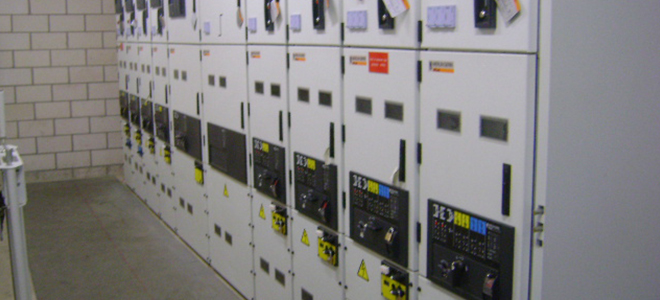Public Centre for Social Welfare and municipality of Lummen
- Home
- What our clients say
- Public Centre for Social Welfare and municipality of Lummen
Practical training helps local Public Centre for Social Welfare and municipality of Lummen navigate regulations on electrical installations
How do you go about conducting a risk assessment in a field you are not familiar with, such as electrical installations? It almost drove the internal prevention advisor of the local Public Centre for Social Welfare (OCMW) and the municipality of Lummen to despair – as it did many of his colleagues. In his own words: “The practical training course by Mensura was one of the most useful courses I ever completed”.
- Challenge
A new Royal Decree has come into effect, with new safety requirements for electrical installations in the workplace. But how do you map all those risks and hazards, and how do you implement effective prevention measures?
- Solution
The training course ‘Risk assessment of electrical hazards in the workplace’, developed by Mensura.
- Benefits
The training course provides companies and organisations with practical guidance on how to successfully implement risk assessments. The course covers the following:
- a concrete step-by-step approach;
- practical exercises based on photos;
- detailed examples.

The latest Royal Decree stipulates that employers must carry out risk assessments for electrical installations in the workplace. The various buildings used by the local Public Centre for Social Welfare (OCMW) and the municipal services of the town of Lummen fall under these regulations. Over 400 people are employed across various departments, including the town hall, the public library, the residential care facility, etc.
Thanks to this course, we were able to conduct a comprehensive risk assessment of all our buildings and facilities."Kris Biesemans internal prevention advisor at the local Public Centre for Social Welfare (OCMW) and of the municipality of Lummen
A crash course
“Of course, what the Royal Decree doesn’t tell you is how to perform such a risk assessment. I didn’t really know where to start”, says Kris Biesemans, internal prevention advisor at the local Public Centre for Social Welfare (OCMW) and of the municipality of Lummen. And he wasn’t the only one. “Many of my colleagues in the field of workplace prevention and protection were wondering how to put all these new regulations into practice. So, I started searching for a training course that addresses all these issues, but most of the ones I came across were too focused on theory rather than practical knowledge.”
“One training course really stood out”, Kris Biesemans continues. “This course offered by Mensura seemed to incorporate a very interactive approach with solutions that could be implemented right away. And I was right! I would even go so far as to call it a practical guide rather than a training course.” “That was exactly what we intended to achieve with this course”, Mensura prevention advisor Patrick Jooken confirms. “We soon noticed that many organisations didn’t know how to comply with the latest safety requirements and regulations. With this training course, Mensura provides a practical guide that addresses every aspect of the process.”
Step by step towards more safety
After completing the brief theory session, the participants work on developing a concrete, step-by-step plan of action. “First, we look at the external factors that may affect electrical installations, such as temperature, water or people”, prevention advisor Patrick Jooken explains. “Based on the construction plans, we then look for any discrepancies, such as in the ambient temperature, for instance. Under the Belgian General Regulations on Electrical Installations (AREI/RGIE), this would usually be classified as a code 4 situation, but in boiler rooms, this would be classified as a code 6. This approach reveals exactly which prevention measures you need to introduce. The course developed by Mensura includes all the relevant codes to ensure that participants can implement this step-by-step approach within their own organisation.”

The next part of the course focuses on risk assessments for high and low-voltage installations. “Participants learn to examine electric panels and uncover any issues that may be present”, says Patrick Jooken. “A checklist for this task is included in the course.” After completing the step-by-step plan, the participants learn all about the fourteen main risk areas in electrical installations. “Based on photos, I ask them to identify any potential hazards. I conclude the session with tips and key areas of focus based on a specific example: high-voltage cabins.”
Low-threshold training
“Thanks to this course, we were able to conduct a comprehensive risk assessment of all our buildings and facilities”, says Kris Biesemans. He also states that the training course was one of the most useful courses he completed throughout his career. “We were able to define a set of prevention measures and translate those into a concrete plan of action. Our technical team was able to implement a number of measures right away, while other measures that are more difficult to implement – and which require the services of an external company – have been budgeted for.”
We noticed that many organisations didn’t know how to comply with the latest safety requirements and regulations. With this training course, Mensura provides a practical guide that addresses every aspect of the process."Patrick Jooken Level 1 Prevention Advisor - Mensura
“Prevention and protection in the workplace covers such a broad range of topics and regulations”, Kris Biesemans adds. “It is impossible for any internal prevention advisor to keep perfectly up to date with all the developments in this area of work. It is incredibly helpful to be able to rely on the expertise of the people at Mensura for all matters relating to such specific topics. The team at Mensura is always there for us. Even after the course was completed, Patrick regularly helped us with any queries we had.”